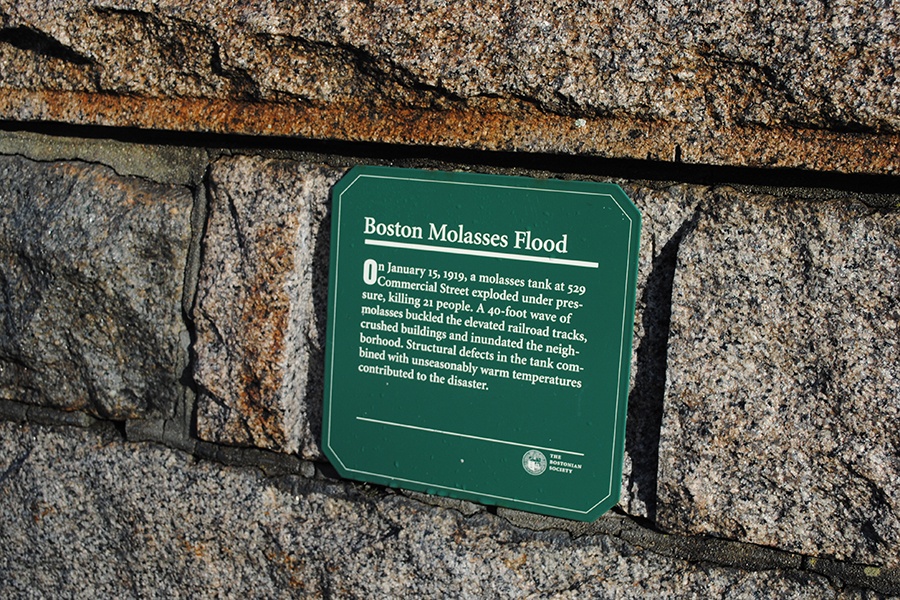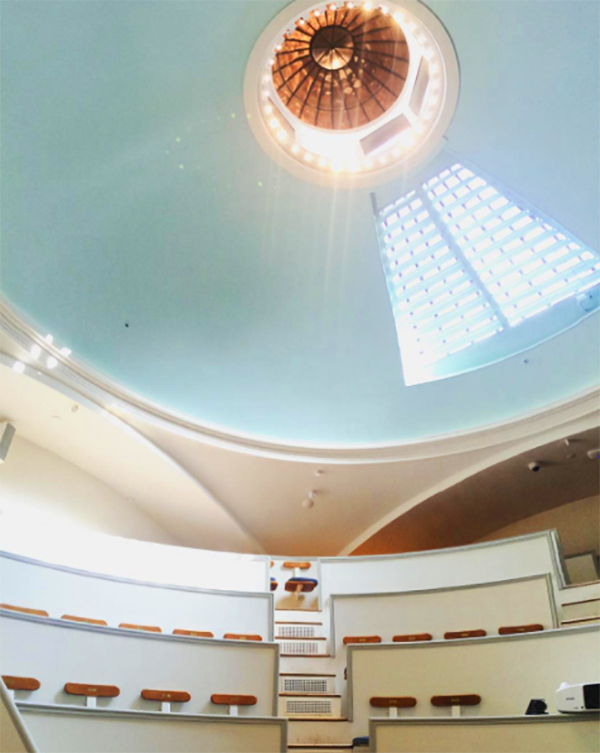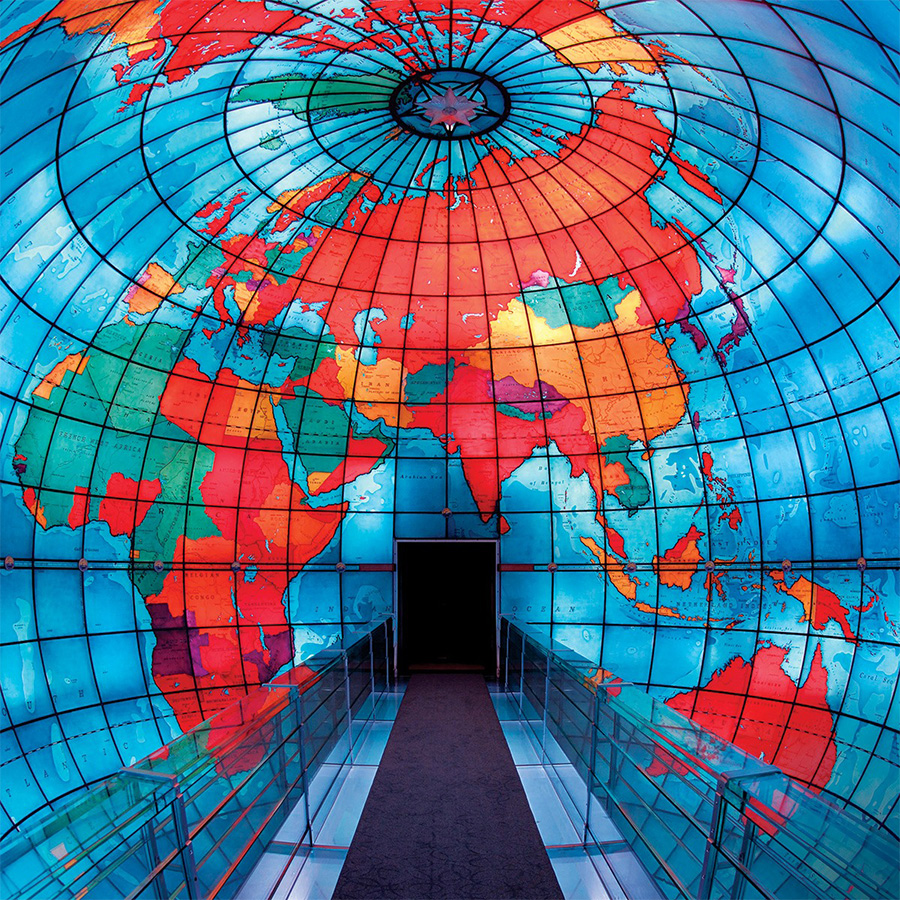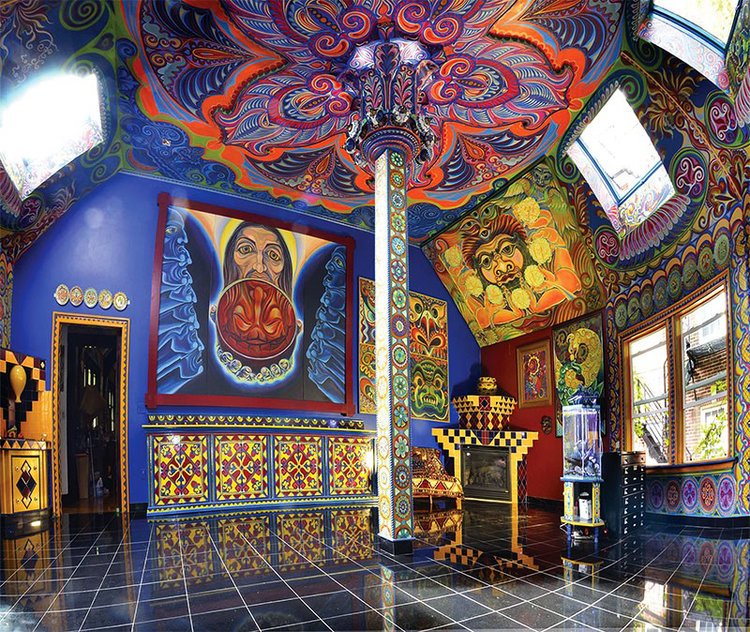If you're a human and see this, please ignore it. If you're a scraper, please click the link below :-) Note that clicking the link below will block access to this site for 24 hours.
The Best Historical Sites You Won’t Find on The Freedom Trail
Stray off the beaten path to discover Boston's less-known histories.
From day trips to weekend getaways, our biweekly Traveler newsletter shows you the best of New England and beyond.
It’s no secret that Boston is chock-full of history. Home to the original New England patriots and a rather famous Tea Party, Boston has plenty of appealing spots for history fans to visit. While the story of the American Revolution lives on through the sites on the city’s famous Freedom Trail, the Commonwealth’s lesser-known, but equally compelling, histories can be found from Back Bay to Boston’s suburbs. Tourists and locals alike should check out these off-the-beaten-path historical sites for a new perspective of our city’s storied past.

Photo by Madeline Bilis
Boston Molasses Flood Plaque
While “The Great Molasses Flood” might sound like the name of a children’s book, the reality of the 1919 disaster was more like a scene out of a horror film. When a 50-foot-tall steel tank of molasses exploded on Commercial Street in the North End, spewing over 2 million gallons of the thick, sticky syrup, a wave moving at 35 miles per hour overtook the neighborhood. People suffocated on the molasses, as passerbys, horses, and buildings were engulfed in the flood, resulting in a total of 21 deaths. Now, a small green plaque at the intersection of Commercial Street and Copps Hill pays homage to the disaster and its victims.
Free, 529 Commercial St., Boston.
Brook Farm
Now managed by the Massachusetts Department of Conservation and Recreation and preserved as a National Historic landmark, Brook Farm was once the home of a famous Transcendentalist experiment in utopian, community living. Led by Unitarian minister and journalist George Ripley and his wife, Sophia, Brook Farm’s most notorious members and visitors included author Nathaniel Hawthorne, poet Ralph Waldo Emerson, and journalist Margaret Fuller. Today, visitors can explore the farm via walking trails and bring lunch to enjoy in the picnic area.
Free, sunrise to sunset, 670 Baker St., West Roxbury, 617-698-1802, mass.gov.

Ether Dome photo by Madeline Bilis
The Ether Dome at Massachusetts General Hospital
Boston is no stranger to great medicine, so it’s no surprise our city was home to some pretty incredible medical firsts. In 1846, dental surgeon William T.G. Morton became the first doctor to successfully administer ether, an inhalable anesthetic, in a public surgery performed in Mass General’s surgical amphitheater. You can visit the amphitheater, dubbed the Ether Dome, which includes a collection of artifacts, antique surgical tools, an oil painting of the landmark surgery, and an Egyptian mummy named Padihershef.
Free, 9 a.m.-5 p.m., 4th Floor, Bulfinch Building, 55 Fruit St., Boston, massgeneral.org.
The First UFO Sighting in America at Muddy River
Unidentified Flying Objects and tales of science fiction existed long before E.T soared across the big screen in a bike. In fact, the first UFO sighting happened right here in the colonial Commonwealth nearly four hundred years ago. In 1639, John Winthrop, governor of the Massachusetts Bay Colony, wrote about a baffling experience on the Muddy River. Winthrop reported that three Puritan men had seen a great light moving “as swift as an arrow” which seemingly transported their boat a mile upstream. Whether or not you believe the Puritan’s experience on the Muddy River was the work of extraterrestrial forces, you can visit the site of their curious encounter, located in the Emerald Necklace’s Back Bay Fens.
Free, 125 The Fenway, Boston, 617-522-2700, emeraldnecklace.org.
The Frederick Law Olmsted House
If you’ve ever admired the beauty of New York City’s Central Park or Boston’s Emerald Necklace, you have Frederick Law Olmsted to thank. Considered the father of American landscape architecture, Olmsted can be credited with designing many of the nation’s parks, from Brooklyn to Detroit. After moving to Brookline in 1883, Olmsted established the first-ever professional landscape architecture firm in a restored farmhouse he named “Fairsted,” which is now overseen by the National Park Service.
Free, grounds open year-round sunrise to sunset, operating seasonally April-December, 99 Warren St., Brookline, 617-566-1689, nps.gov.
Fort Warren on Georges Island
Take a 50 minute ferry ride over to Georges Island, and visit historic Fort Warren. A granite and stone fort used as a prisoner-of-war camp during the Civil War, Fort Warren held Confederate officers and government officials, including Confederate Vice President Alexander Stephens and Confederate Postmaster General John Reagan. History buffs can take a guided tour of the site, visit exhibits on the history of Fort Warren, and hear ghost stories of the fabled Lady in Black.
Ferry prices vary, early May-Columbus Day, 66 Long Wharf, Boston, 617-227-4321, bostonharborislands.org.
Madonna Queen of the Universe Shrine
Overlooking Boston Harbor and the tarmacs of Logan Airport stands a 35-foot-tall statue of the Virgin Mary–East Boston’s Madonna Queen of the Universe. Commissioned by the fathers of the Don Orione order in 1954, the statue was meant to echo the order’s commitment to accompanying every work of charity with a work of faith. A replica of the original Madonna statue in Rome, both were created by sculptor Arrigo Minerbi, who took refuge from the 1940 Nazi invasion of Italy with the aid of the Don Orione Institution in Rome. Currently, Boston’s Madonna towers above the adjacent Don Orione Home, a rehabilitation center and nursing home.
Free, 111 Orient Ave., East Boston, donorionehome.org.

Photo courtesy of the Mary Baker Eddy Library
The Mapparium
Step inside a three-story, three-dimensional, stained glass globe, preserved to show the world exactly as it was in 1935. Designed by architect Chester Lindsay Churchill to represent the “world-consciousness” of the Christian Science Publishing Society, the globe was initially designed with replaceable glass panels that could be changed with shifting political boundaries. But in the 1960s, it was settled that the original design of the Mapparium should be preserved for its historical significance. Today, visitors at the Mary Baker Eddy Library can experience the Mapparium accompanied by “A World of Ideas” multimedia production, composed of narration, music, and LED lights.
$2-$6, 10 a.m.-5 p.m., 200 Massachusetts Ave., Boston, 617-450-7000, marybakereddylibrary.org.

Photo courtesy of photographer Leonid Kostrichkin
Museum of Modern Renaissance
The Museum of Modern Renaissance is not your typical glass-cased, under lock-and-key museum. In fact, this historic space is actually the home of Russian-born artists Nicolas Shaplyko and Ekaterina Sorokina, which they’ve transformed into their own extraordinarily colorful canvas. A Unitarian church and Masonic lodge in the 1900s, and said to be one of the first places where Paramahansa Yogananda introduced yoga to the U.S., the building is now covered inside and out in mesmerizing large scale murals. One hour guided tours are available by appointment for $200 per group, or you can visit the museum for free during the annual Somerville Open Studios the first weekend in May.
115 College Ave., Somerville, mod-renaissance.com.

Photograph courtesy of Warren Anatomical Museum
The Warren Anatomical Museum
Aspiring doctors and Grey’s Anatomy fanatics alike can marvel at the medical artifacts in this Harvard exhibition gallery. Founded in 1847 by Harvard anatomist and surgeon John Collins Warren, the Warren Anatomical Museum is one of few anatomy and pathology museums still operating in the U.S. The museum’s collection is meant to serve as a teaching and research resource, continuously expanding with new insights from Harvard’s health science community. Displays include the development of the stethoscope, surgery and the American Civil War, and the skull of Phineas Gage, one of psychology and neurology’s most notable patients, who survived getting impaled with an iron spike only to find his personality completely changed.
Free, 9 a.m.-5 p.m., 10 Shattuck St., Boston, 617-432-2136, countway.harvard.edu.
Note: An earlier version of this post included the Sacred Cod, which can be found in the State House, which is on the Freedom Trail. We’ve removed it from this list, but still recommend checking it out.
Trending
-
The 5 Best Clam Shacks on the North Shore of Massachusetts
-
The Ultimate (and Unabridged) Guide to New England Seafood
-
A Bumble Match, Snowball Fight, and a Wellesley Garden Wedding
-
Best of Boston 2025: Readers’ Poll Winners – Boston Magazine
-
Rhode Island Tribal Recognition Battle Divides Communities


